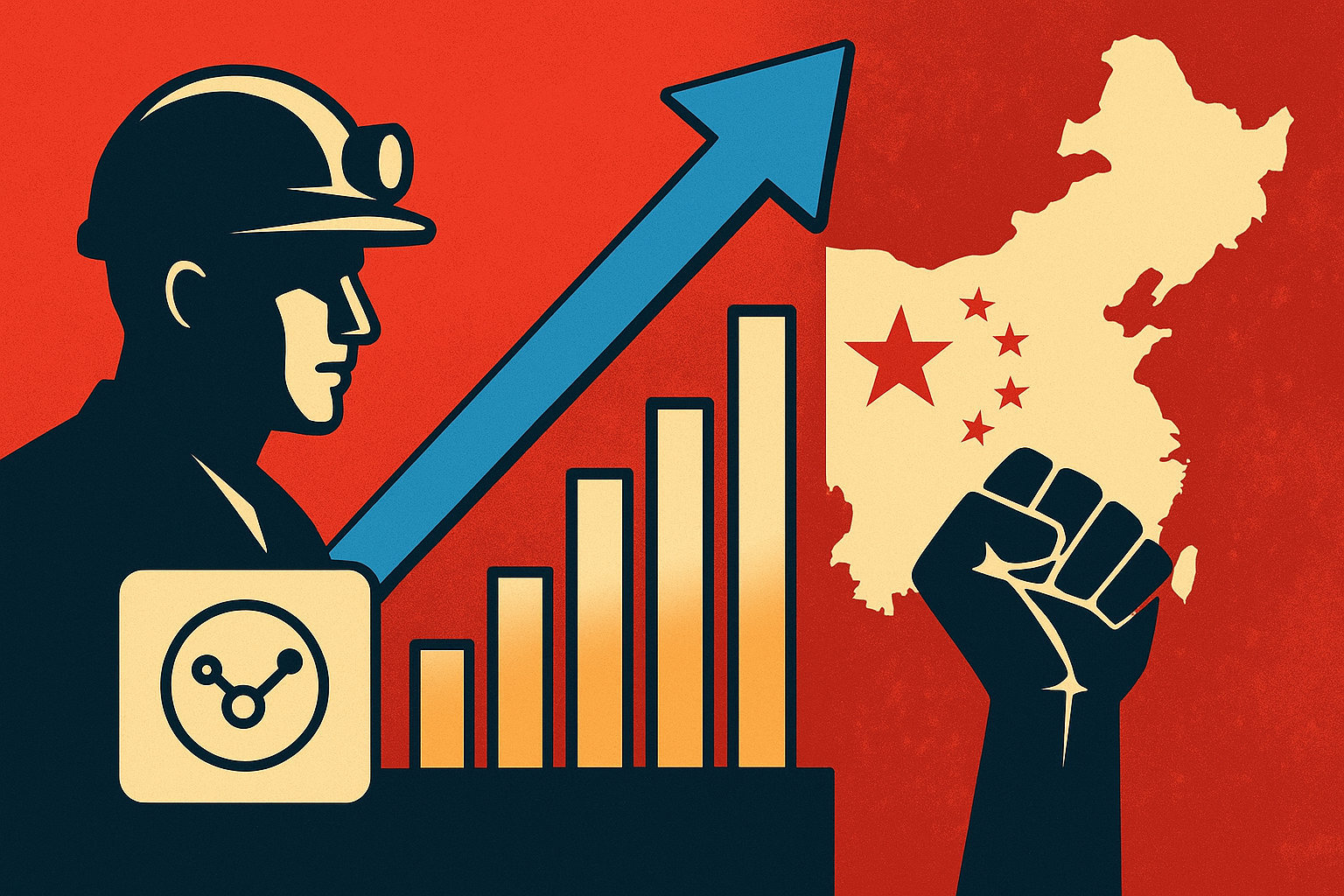Rare-earth and critical-minerals stocks surged Monday as geopolitical tensions over resource control reignited. The Financial Times reported that shares of key U.S., Canadian, and Australian miners jumped between 8–15% after Washington unveiled new policy measures aimed at building domestic rare-earth supply chains—just as China, which dominates global refining capacity, announced tighter export restrictions on strategic minerals.
The moves are being interpreted as a new phase in the global competition over control of critical inputs for electric vehicles (EVs), defense technology, and semiconductors—industries increasingly viewed as strategic assets rather than just market-driven sectors.
The New Frontline in Resource Security
China currently refines over 80% of the world’s rare-earth elements, according to data from the U.S. Geological Survey (USGS). These minerals—such as neodymium, dysprosium, and terbium—are essential for EV motors, wind turbines, and precision-guided military systems. With Beijing imposing tighter export controls on certain processing technologies and mineral categories, the United States and its allies are racing to establish alternative supply networks.
The U.S. Department of Energy (DOE) recently announced additional funding under the Inflation Reduction Act (IRA) to support domestic processing facilities, while the Department of Defense extended offtake agreements with MP Materials ($MP) and Lynas Rare Earths ($LYC.AX) for key strategic materials. Canada and Australia, meanwhile, are emerging as favored jurisdictions for new exploration and refining investments.
Why This Matters for Investors
This is not just another commodities rally—it’s a geopolitical reordering of resource dependencies. As investors digest the dual shock of U.S. policy acceleration and Chinese export tightening, the rare-earths sector is once again drawing speculative attention.
But analysts warn that this space is a “thematic trap” as much as it is an opportunity. The sector’s past booms—in 2011 and 2020—were characterized by retail-driven speculation that left many junior explorers stranded when prices normalized.
“Investors should differentiate between firms with proven reserves, refining capacity, and government-backed supply agreements versus those still in speculative exploration phases,” noted a BMO Capital Markets report on Monday. “Execution, not excitement, will determine who survives this cycle.”
The Policy-Driven Demand Curve
Global demand for rare earths is forecast to grow sixfold by 2040, driven primarily by the electrification of transport and renewable energy infrastructure (International Energy Agency). The U.S. and Europe are targeting supply-chain diversification through grants, tax credits, and direct investment vehicles.
The Biden administration’s recent “Critical Minerals Strategy” also emphasizes collaboration with allies, including Canada, Australia, and Japan, to build refining hubs outside China. Meanwhile, the European Union is finalizing its Critical Raw Materials Act, which includes targets for domestic sourcing and recycling by 2030.
These measures signal that critical minerals are no longer treated as cyclical commodities—they’re being reclassified as strategic infrastructure.
Opportunities and Risks
Opportunity:
- Established Players: Firms such as MP Materials ($MP), Lynas ($LYC.AX), and Iluka Resources ($ILU.AX) stand to benefit from long-term offtake contracts and policy support.
- Infrastructure Buildout: Companies specializing in refining, recycling, and processing technologies could see increased investment as governments aim to close the midstream gap.
- Private Capital Flow: Private equity and sovereign wealth funds are showing renewed interest in critical-mineral investments, often through joint ventures with governments or defense contractors.
Risk:
- Speculative Juniors: Many small-cap miners will likely struggle with financing and permitting delays.
- Overbuild Risk: Too many new projects entering the pipeline could lead to oversupply once policy momentum slows.
- Financing Costs: With rates elevated, project financing is costly, potentially delaying new capacity.
Key Investment Insight
This rally underscores that rare-earths are not just a materials story—they’re a security story. Investors seeking exposure should focus on companies that combine verified geological assets, proven refining capability, and government or defense-linked offtake contracts. The space remains volatile, but those aligned with policy-backed projects may find asymmetric upside.
The next phase of this market will be defined less by exploration hype and more by industrial execution. For institutional and retail investors alike, the ability to separate strategic assets from speculative noise will determine performance.
Stay with MoneyNews.Today for continuous updates on critical-mineral markets, geopolitical resource shifts, and the evolving landscape of metals and mining investment.





